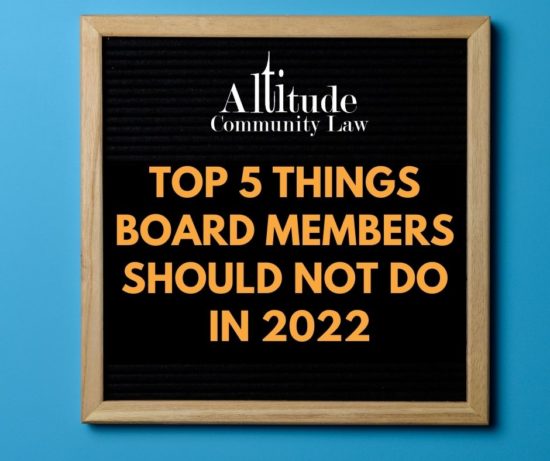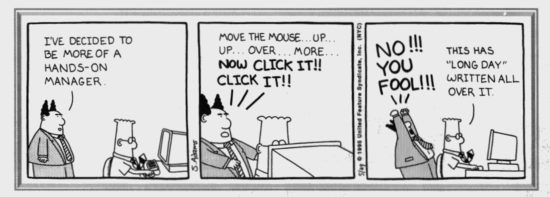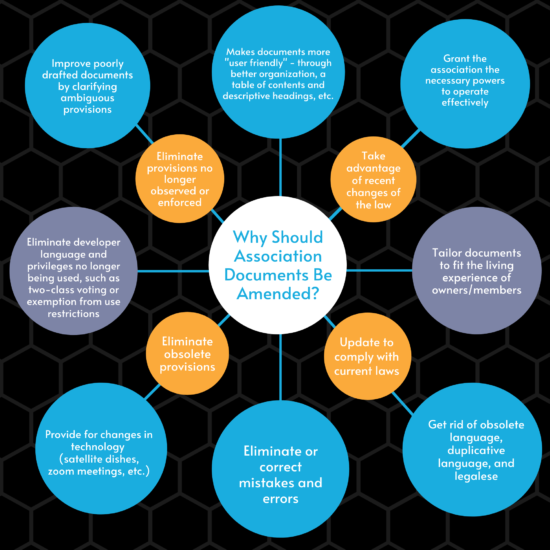
ONE: Your Reserve Fund Is Your Friend. Don’t Ignore It.

It used to be that I would periodically field questions on financial problems due to inadequate reserves. Today, I am constantly preparing special assessment letters, reviewing loan documents, drafting reserve study policies, and generally advising on all questions related to associations experiencing financial crisis. Why? Because board members don’t have a reserve fund or have failed to properly manage it.
Board members owe a fiduciary duty to the association, which includes a duty to act in good faith, prudently, and in the best interest of the association. This duty extends to all decisions of the board, but particularly to financial decisions. When homeowners elect you to the board, they are entrusting you with a lot of money, sometimes millions of dollars. And, your duty is not only to spend money wisely, but to preserve and grow your financial assets.
Good board members know to adopt an appropriate budget that will fund next year’s maintenance projects. Better board members know to adopt a solid reserve plan for replacing those items that need to be replaced on a periodic basis. The best board members know that you need to manage your reserve plan and not let it stagnate.
We’ve all read articles about why reserve funds are critical and the need to conduct a reserve study. But now that you’ve created a reserve fund, what should you do with it? You need to manage it so you can get the best bang for that almighty buck you just spent on the reserve study! Don’t put your reserve plan in a binder and let it gather dust.
Here’s what you do not want to do with your reserve fund or plan:
1. Fail to contribute to your fund: What good is a reserve plan if you don’t add to it? The most successful plan is the one that adds according to the recommendations of the reserve study. I know this can be difficult, but it’s probably not as difficult as having to levy a 2.5 million dollar special assessment because you have no money in your reserves.
Realistically, the best amount to contribute is whatever owners can afford. But if you’re contributing less than 10% of your operating budget, you’re likely looking at a special assessment down the road.
2. Fail to regularly review your reserve plan and make appropriate adjustments: Many associations only review their reserve plan once every 5 years. I think this is a mistake. A lot of things could happen in those 5 years that might require an adjustment to your plan, sooner rather than later. You might have added or replaced significant common area components. Perhaps certain capital improvements have sustained extreme wear and tear from harsh weather or lack of maintenance. Maybe reserve income has not gone as planned. You should review your reserve plan on a yearly basis and consider updating your reserve plan every three years.”
3. Borrowing from your reserve and not having an aggressive plan to replenish it: We’ve all faced the unbudgeted emergency expense with seemingly no way of paying it other than dipping into reserves. I am not a fan of borrowing from reserves and strongly recommend against it. Often there are other options to consider, but boards do not want to consider them.
Borrowing from reserves is a little like dipping into your retirement nest egg to deal with urgent cash flow problems. But with a reserve fund you’re not playing with your own money. Board members have a fiduciary duty to make prudent financial decisions with association funds. If you take money from the reserve account today, you better have an aggressive plan to replenish it.
If you fail to appropriately manage your reserve plan, you’ll be facing the same undesirable questions as those boards who don’t even have one: Do we need to pursue an extreme budget increase? Levy a hefty special assessment? Get a loan? All three? All of these options result in a lot of financial stress and burden on everyone. Don’t be that board.
TWO: It’s Not Okay to Let Bullies Continue to Bully.
Bullies come in all shapes and sizes, and they are not relegated to the playground. They are in our everyday lives. And more often, these days, I see them in homeowners associations. And not just board member bullies, but homeowners, managers, vendors and other industry professionals.
With virtual platforms and the ever-so-useful mute button, it was easy to deal with the screaming bully board member. But what happens when you start having in-person meetings again? You will have to deal with the bully. But first, keep in mind that not all bullies look like this:

Not all bullies scream, shout or browbeat. Sometimes bullies don’t know they’re bullying. Sometimes people don’t realize they’re being bullied.
In an excellent article entitled “Bully No More” Tamara Lytle discusses several different types of bullies:
- The Get-A-Life Bully: This bully starts off as an advocate, but then gets over-involved. They have a daily presence at the management company and look over everyone’s shoulders.
Consequence: Managers, contractors, vendors quit.
- The Intimidator: This bully shouts at people, and uses power of intimidation. Unfortunately, some people may think this bully is impassioned and be impressed.
Consequence: Board members quit.
- The Expert: This bully forgoes shouting and intimidation and relies on facts and special expertise to get their way.
Consequence: By not relying on an outside third party expert, liability protection over this bully is likely removed.
- The Troll: These bullies are the saboteurs. They will do anything to win for the sake of winning. They are manipulative and destructive.
Consequence: Everyone quits. Plus, you experience the general derailing and destruction of otherwise healthy board interactions.
Do you recognize the above bullies? Maybe you recognize the consequences and didn’t even know there was a bully was in the house.
If you have a bully on the board, do not let them continue to bully. Try to nip it in the bud early, because bullies derive more power through lack of confrontation. And, allowing bullying behavior to continue, especially if it is evident to everyone around you, will discourage others from joining the board. For some quick tips on taming the bully, take a look at a great online resource from the Community Associations Institute: How to Handle Board Member Bullies.
Additionally, you should give more thought to the onboarding process. Some bullies don’t know their roles and will simply step into a controlling position and, from there, start bullying. Each association should have a thorough onboarding and training process. Everyone should know from the get-go the process for decision-making, how each director gets an equal vote, that there is no hierarchy among officer positions, that the board must allow the manager to administer the decisions of the board, and all other principles of governance. And, everyone should understand and follow such principles, and timely address the problem of people straying from their roles.
Finally, if nothing else works, remove the bully from the board. How do you remove a board member? First, keep in mind that a board member who was elected by the owners cannot be removed by the remaining board members (regardless of whether your governing documents allow it). Under Colorado law, elected board members can only be removed by the owners. The remaining board members may, however, remove a director who was appointed in to fill a vacancy. You will need to check your Bylaws for this authority.
Second, check your Bylaws for the approval requirement and process for removing a board member. Make sure you are looking at the section regarding removal of board members or directors, not removal of officers. The removal requirement is document specific, but most Bylaws either require removal by a majority of the total Association vote or 67% of a quorum of Members.
Third, if your association is a post-CCIOA association (i.e., created on or after July 1, 1992), then regardless of the removal requirement stated in your Bylaws, you need to follow C.R.S. §38-33.3-303(8) of the Colorado Common Interest Ownership Act. This section provides that 67% of the Owners present at a meeting, at which a quorum is present, may remove a board member with or without cause.
If you’re still unsure of the appropriate removal requirement or process, consult your attorney.
THREE: If You Keep Micromanaging People They Will Leave You.

A board made up of non-micromanagers meets on a regular basis to ensure the proper operation and governance of the community. Often this means meeting on a monthly or quarterly basis to formulate goals, develop plans, assign tasks, and monitor progress. Effective board members understand each person’s role in achieving the desired outcome, trust each person to carry out that role, and do not exceed their own roles or infringe upon someone else’s role in the process.
The micromanaging board member, on the other hand, has his or her hands in everything, shows no trust in others to perform tasks that are assigned to them, creates more paperwork than necessary, and wastes the time of everyone around him or her, etc.
One of the best things you can do as a board member is to avoid day-to-day hovering and decision making. Allow plans to be administered and tasks to be performed. Trust in your management company to carry out the board’s decisions. Stop conducting meetings between meetings. If you continue to look over every one’s shoulders, rather than just doing your job, you may find it difficult to keep managers, vendors, and other board members by your side.
Do you know whether you are a micromanager? If you find yourself regularly doing any (or all!) of the following, most likely you’re a micromanager:
- You resist delegating work;
- You ask for frequent updates;
- You look at every detail rather than focusing on bigger perspective;
- You prefer to be cc’d on every email;
- Your association has an unusually high board turnover (but you’re still on the board!) or manager turnover;
- You suggest unrealistic deadlines;
- You become irritable when decision are made independently without your input;
- You feel that if a task is to be done right, you should do it yourself;
- You constantly email or text other board members/the manager between meetings; and
- You re-do the work of manager/other board members after it’s finished.
FOUR: Ignoring Out-of-Date Governing Documents Equals Stress, Headaches, and General Unpleasant Feelings.

If your governing documents are over 15 years old, they are likely out of compliance with law and out of touch with the needs of your community. Did you know, for example, that you can no longer prohibit or regulate signs from being installed within the unit boundaries or windows based on content (other than commercial signs)? Did you know that Colorado law now requires you to keep certain records open for inspection by owners, and to withhold certain records from inspection? Did you know that owners do not have to obtain association approval prior to installing satellite dishes on their unit or exclusive use area, regardless of what your documents state?
The above are only a few examples of the numerous updates to Colorado law over the last 10 years. If your governing documents do not comply with Colorado law directors can be misled as to their duties and responsibilities by relying on outdated provisions. And, owners are similarly misled into believing the documents accurately describe their rights and obligations.
Additionally, even though your governing documents no longer make any sense for your community, until you amend them directors still need to enforce them as written, and Owners will still need to follow them as written.
Other than the age of your governing documents, what other some other red flags for amendment?
- You have consulted an attorney more than three times in the last year for interpretation. Much as I like to bill a client for providing a legal opinion on how to interpret ambiguous documents, I’d much rather you spent the money on rewriting your documents so they make sense in the first place.
- You consistently fail to meet or enforce the requirements of your governing documents. The Board has a duty to enforce its governing documents.
For more information on the why and how of amending your governing documents, check out our Altitude Community Education webinar Now is the Time to Amend Your Governing Documents.
FIVE: Not Staying Calm in a World Full of Chaos Will Bring Ruination and Despair.

The HOA industry, particularly these last two years, can be pretty chaotic. But how to stay calm in a world full of chaos?
Whenever we’re feeling particularly beat down by a chaotic period, Elina Gilbert and I always laugh and bring up the movie “Get Him to The Greek.” If you’ve seen the movie, then you’ll know that the character Aldous Snow tells his friend that when life lets you down (or in Aldous speak “when life slips you a Jeffrey”), then all you have to do is stroke the furry wall. And there’s this furry wall that Aldous makes his friend stroke to calm him down. The furry wall is soft, feels good, makes his friend forget his rising panic, and reminds him that the world around him is, in one word, beautiful (Yes, it IS!).
So maybe one thing you can do when someone is screaming at you on the phone because you won’t open the pool, or your email inbox has grown from 10 emails to 50 to 100 in one day (or one hour??), or you have to plan for two back-to-back virtual annual meetings each with 200+ people, is stroke the furry wall! Figure out what makes you feel calm, what soothes your senses, what lowers your heart rate, then step back and do it.
When I was feeling continually exhausted last year when the COVID craziness first hit, I would literally take one of my dogs (I have two: Bridget & Bailey) and snuggle and pet her. This action did not make my task list shrink. It did not finish my legal opinion for me. It did not help me climb out of the ever-growing weeds. But it did make me feel a lot better. I would immediately feel calmer, my breathing was more relaxed, my attention became focused on how adorable my dogs were and their unconditional love for me. This was my “furry wall.” Soon, the pandemonium in my head would lessen to a dull roar before disappearing completely. All of a sudden, I was smiling again.
And, when I was able to step back into the world, my mind had ordered itself, so that I was in a much better position mentally to face the tasks, calls, problems in an orderly manner, instead of just contributing to the chaos. (By the way, I now fully subscribe to the whole “emotional support animal” concept).
So, what can you do that will make you slow down, breathe, relax, remind you of the goodness of life? Taking a nice long drive? Gardening, or just sitting in your garden surrounded by all your lovely flowers? Snuggling your favorite furry friend? Having a bubble bath? When you’re feeling the chaos build, don’t let the momentum destroy you. Make a decision right then and there to create calm. A relaxed body will help the mind and the emotions calm down.
Please do not hesitate to contact an Altitude attorney at 303-432-9999 or [email protected] for more information on what not to do in 2022 and for all HOA legal questions in general!